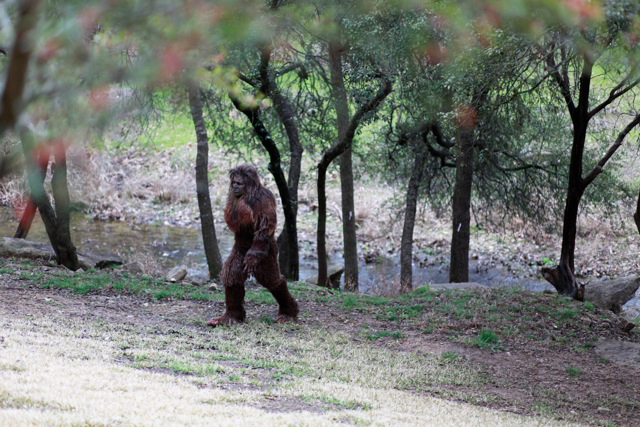Worst-Case Wednesday: How to Survive an Encounter with a Bigfoot
Image via www.coolinterestingstuff.com
Every Wednesday, we offer advice and strategies to survive all of the most dire and urgent circumstances, as well as some of the more common scenarios we all deal with.
This week we've got an excerpt from The Worst-Case Scenario Almanac: Great Outdoors. School is ending, summer is starting, and camping season is up and running. Any good woodsman (or woman) knows that preparedness is key. We all know how to deal with bear attacks and long car trips, but what about the real threat out there in the wild? What about… BIGFOOT?! Hopefully this guide will save you from becoming a Little Splat under a Big Foot.
Step 1: Avert Your Gaze
A bigfoot may interpret direct eye contact as an attempt at domination and may react unpredictably. Keep it in your peripheral vision to monitor its actions.
Step 2: Remain Quiet
A bigfoot will probably maintain its distance unless it feels you are attempting to annex its territory. Do not shout or open your arms to appear larger, as it may read your actions as a challenge.
Step 3: Control Your Dog
Bigfoots may attack aggressive dogs that chase or threaten them.
Step 4: Behave Like a Forest Animal
To appear less threatening, sit down and scratch yourself as an animal might. Eat, or pretend to eat, anything within reach. If you are with a companion, “groom” him by focusing on pieces of leaves or dirt on his body and picking them off with your hands.
Step 5: Do Not Attempt to Outrun a Bigfoot
Bigfoots may be able to run at speeds of up to 40 miles per hour, as fast as a typical horse.
Step 6: Do Not Attempt to Outswim a Bigfoot
Bigfoots are likely powerful swimmers, both above and below the water.
Step 7: Do Not Attempt to Hide From a Bigfoot
Bigfoots are thought to have a keen sense of smell and excellent night vision.
Step 8: Shine a Flashlight in Its Face
Bigfoots may be bothered by bright lights and will likely retreat if they are caught in a spotlight.
Be Aware:
There have been roughly 2,000 to 6,000 Bigfoot sightings in North America. They have been spotted in remote wooded, mountainous, or swampy areas as far as north as Alaska and the Yukon to as far south as New Mexico and Texas. They are most often reported in the forests of Washington, Oregon, and Northern California.
Bigfoot sightings generally describe a creature roughly eight feet tall and weighing 650 to 1,000 pounds. At that size, they would likely be able to throw rocks and barrels that weigh as much as 450 pounds, and be capable of lifting cars and trailers off the ground.
Be careful out there, campers!

Hannah Frank
Hannah Frank is a creative writer, television aficionado, and cool ranch Doritos fan. She wishes she could live forever and is currently seeking advice on how to do so which does not include exercise, kale, or vampires.

